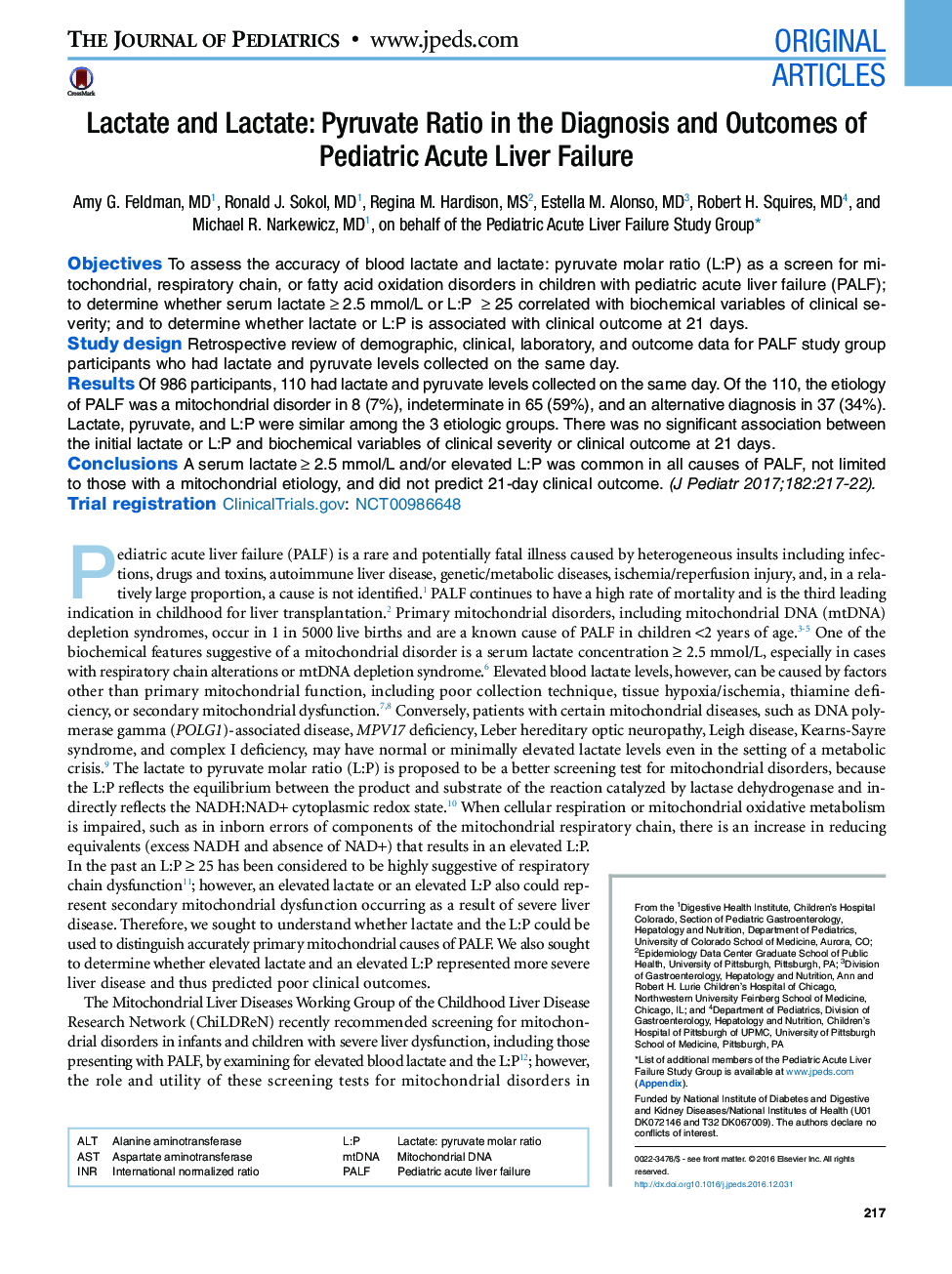| Article ID | Journal | Published Year | Pages | File Type |
|---|---|---|---|---|
| 5719678 | The Journal of Pediatrics | 2017 | 9 Pages |
ObjectivesTo assess the accuracy of blood lactate and lactate: pyruvate molar ratio (L:P) as a screen for mitochondrial, respiratory chain, or fatty acid oxidation disorders in children with pediatric acute liver failure (PALF); to determine whether serum lactateââ¥â2.5âmmol/L or L:P ââ¥â25 correlated with biochemical variables of clinical severity; and to determine whether lactate or L:P is associated with clinical outcome at 21 days.Study designRetrospective review of demographic, clinical, laboratory, and outcome data for PALF study group participants who had lactate and pyruvate levels collected on the same day.ResultsOf 986 participants, 110 had lactate and pyruvate levels collected on the same day. Of the 110, the etiology of PALF was a mitochondrial disorder in 8 (7%), indeterminate in 65 (59%), and an alternative diagnosis in 37 (34%). Lactate, pyruvate, and L:P were similar among the 3 etiologic groups. There was no significant association between the initial lactate or L:P and biochemical variables of clinical severity or clinical outcome at 21 days.ConclusionsA serum lactateââ¥â2.5âmmol/L and/or elevated L:P was common in all causes of PALF, not limited to those with a mitochondrial etiology, and did not predict 21-day clinical outcome.Trial registrationClinicalTrials.gov: NCT00986648
